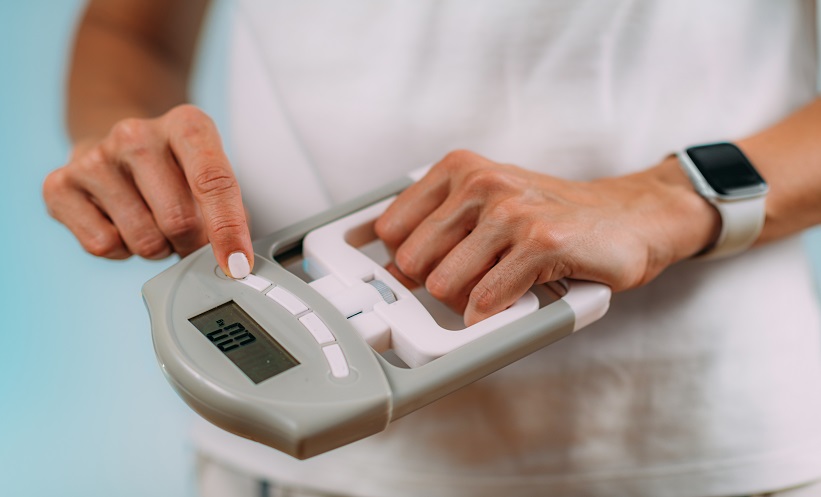Interview Summary
The last decade has seen a rapid expansion in the use of technology by people living with Type 1 diabetes. But how should the information generated by this technology be interpreted and used to inform patient management?This is where Academy™ comes in, providing free certified education on best practice for using the plethora of options in diabetes technology.
In this interview with EMJ, Pratik Choudhary, Professor of Diabetes, Leicester Diabetes Centre, University of Leicester, UK, and Chair of the Diabetes Technology Network-UK (DTN-UK), outlined the genesis and development of the Academy online platform, what it currently offers, and what is in the pipeline for this unique resource.
MANAGING THE MYRIAD OF DIFFERENT DIABETES TECHNOLOGIES
For people with diabetes and their healthcare providers, managing the myriad of technologies like glucose monitors and insulin pumps, as well as the data volume that accompanies these technologies, is a well-established challenge. And while tech-based services like web-based programmes, telehealth, mobile apps, and remote monitoring are improving users’ accessibility and connectivity, the adoption of these innovations has been slow.1
“As diabetes technology becomes increasingly widespread in routine clinical practice, we need to train all levels of our diabetes and wider health workforce in what these technologies are and how to use the large amounts of data they generate,” said Choudhary. “Use of these technologies has transformed how we deliver care, especially during these challenging times. Academy provides clinicians with an easy way to understand and use technology together with their patients.”
There is good reason to use diabetes technologies, as international research has linked them with better outcomes. A nationwide UK audit found that flash glucose monitoring was associated with improved glycaemic control and hypoglycaemia awareness, as well as reduced hospital admissions.2 A Swedish study demonstrated improved glycaemic control in patients using connected pens,3 while a meta-analysis indicated that closed loop insulin delivery increased blood glucose control and reduced the number of hypoglycaemic events compared with sensor augmented pump delivery.4 The German HypoDE study found that real-time continuous glucose monitoring reduced hypoglycaemic events in patients with Type 1 diabetes treated with multiple daily insulin injections and with impaired hypoglycaemia awareness or severe hypoglycaemia.5
As part of the National Health Service (NHS) improvement programme, the Getting It Right First Time (GIRFT) review of diabetes recommended that “staff should be trained to support patients using [diabetes] technologies and given the time that they need to complete this training, which should form part of their annual appraisal process.”6 This requirement kick-started the process for establishing Academy. During the year-long project, expert clinicians in DTN-UK produced the content, Glooko (Mountain View, California, USA) provided the platform and project management, and production was completed by DigiBete (DigiBete Global, Leeds, UK), which remains actively involved in Academy. Funding for the project came from industry partners including Abbott, AgaMatrix, Dexcom, Insulet, Medtronic, Lilly, mylife Diabetescare, Novo Nordisk, and Roche.
WHO IS ACADEMY™ FOR?
Academy is aimed at all healthcare professionals who support people using diabetes technology. While most people using complex technology such as insulin pumps and closed loop systems are generally followed up in secondary care by specialists, healthcare professionals in other specialties and those in primary care, such as general practitioners and practice nurses, will increasingly come across devices like continuous glucose monitors and connected pens. “Some 7–8% of the population has Type 1 diabetes, so healthcare professionals in all settings will come across these patients and will need some familiarity with the devices they use,” noted Choudhary.
DIABETES TECHNOLOGY TRAINING: FROM FINGER PRICKS TO CONNECTED PENS
The Academy platform was developed in step with announcements on diabetes management from NHS England and in line with new National Institute for Health and Care Excellence (NICE) guidance for Type 1 diabetes. There are eight courses in total, each with a number of modules that focus on a particular type of technology. All of the information is provided in videos, which include a summary at the end, followed by self-assessment tests.
Flash glucose monitoring was the catalyst for the growing use of diabetes technology in the UK, and is the subject of the first course. “Seven in 10 people with Type 1 diabetes don’t finger prick anymore,” said Choudhary. “They just swipe their arm with a device and get the data. Supporting clinicians in supporting their patients with the widespread use of flash glucose monitoring across the country was the big push when we set out with this educational project.” New guidelines by the NICE have recommended wider access to include continuous glucose monitoring for adults and children with Type 1 diabetes.
Following NHS England’s announcement of funding for pregnant females with Type 1 diabetes to use real-time continuous glucose monitoring, a dedicated course was created for continuous glucose monitoring in pregnancy. A third course focuses on these devices in all patients with Type 1 diabetes. Access to insulin pumps varies widely across the UK, and a fourth course was designed to train clinicians to support patients using these devices. Closed-loop systems link insulin pumps and continuous glucose monitoring devices so that the correct amount of insulin is delivered based on real-time glucose readings. NHS England has funded a pilot on these systems, also called ‘artificial pancreas’, which prompted course number five.
The COVID-19 pandemic led to a rise in virtual consultations, so this became the topic for the sixth course. Course seven was finger prick readings for self-monitoring, which may be of particular interest to primary care practitioners. The most recent course is focused on the connected pens that are set to reach the market within the next year. These devices can record the exact time and dose of insulin delivered and share these data with online databases. The dedicated course for this technology is coming soon.
“All of the content is device-agnostic,” noted Choudhary. “As an example, we provide generic advice on how to set up an insulin pump, what therapeutic changes should be made when certain patterns are observed in the data, and what to tell the patient. The educational videos were reviewed by people with Type 1 diabetes to ensure that all important points are covered and that the language is patient-friendly. Similar content is on DTN-UK’s website for patients so that healthcare professionals and people living with diabetes can speak the same language when discussing technologies.”
In total, there are over 27 hours of videos, which health professionals can view in any order, at their own pace. Choudhary explained: “We wanted to stay away from a mandated, prescriptive course that you have to complete from start to finish. Individuals can choose which courses they want to do based on the needs of their job role.”
Assessment and Accreditation
In response to the GIRFT recommendation that staff delivering a Type 1 diabetes service need to be able to demonstrate their understanding of diabetes technologies, the platform provides Continuing Professional Development (CPD) accredited by the Association of British Clinical Diabetologists (ABCD). Each course finishes with an assessment, and a CPD-approved certificate is awarded for successful completion. “Healthcare professionals can put the certificates into their appraisal portfolio to demonstrate that they’ve done the training required to deliver diabetes technology care,” said Choudhary. “Importantly, the evaluation tests both knowledge and application in clinical scenarios.”
Choudhary pointed out that accreditation is for health professionals at all levels of exposure to these devices. “Experienced clinicians may prefer to do the assessments only, rather than watching the educational videos,” he said.
HOW TO ACCESS THE ACADEMY™ PLATFORM
Industry sponsorship means that the platform is free for all healthcare professionals, while DTN-UK maintains editorial control over the content. Healthcare professionals working in primary and secondary care can access Academy via Glooko, which is currently used by approximately 90% of secondary care clinics in the UK to access patients’ glucose data.7 Glooko® replaces diasend®, so clinics may need to migrate their Academy account to the new system. Health professionals can also access the platform via the ABCD website.8 Clinicians who do not have an account with Glooko® for viewing device data can still access the Academy platform for free on request.
UPTAKE IS SPREADING ACROSS THE UK
It has been a busy year for Academy, with over 1,000 doctors and nurses across more than 300 clinics now taking the courses, and close to 1,200 courses currently in progress. On top of that, more than 750 CPD certificates have been attained by healthcare providers in the UK.
“The feedback has been that people have found the training really valuable,” said Choudhary. “Even clinicians who have been using technologies for a while have said they learned something new. We are planning some research to examine how the courses have changed clinicians’ confidence and usage of diabetes technologies. We want to know if they now feel more comfortable recommending a device and supporting patients to use it.”
WHAT IS NEXT FOR ACADEMY™?
In addition to the recently added course on connected pens, a launch of the platform in Ireland is imminent. Other priorities this year are to increase coverage across the UK and respond to any feedback.
A future goal is to investigate whether the uptake of technology in different UK regions correlates with the uptake of education. “One of the challenges of technology coming into the world of diabetes has been disparities in adoption,” said Choudhary. “Access to insulin pumps varies from 1–40% of patients in different trusts across the UK, while access to flash glucose monitoring ranges from 30–70% in different clinical commissioning groups. Some of that variation is due to diverse policies and funding restrictions, but we expect that some of it is healthcare professional familiarity and education on how these devices are used. One of the big ideas in this endeavour is that more widespread training could lead to more patients using devices that have been shown to improve outcomes.”






